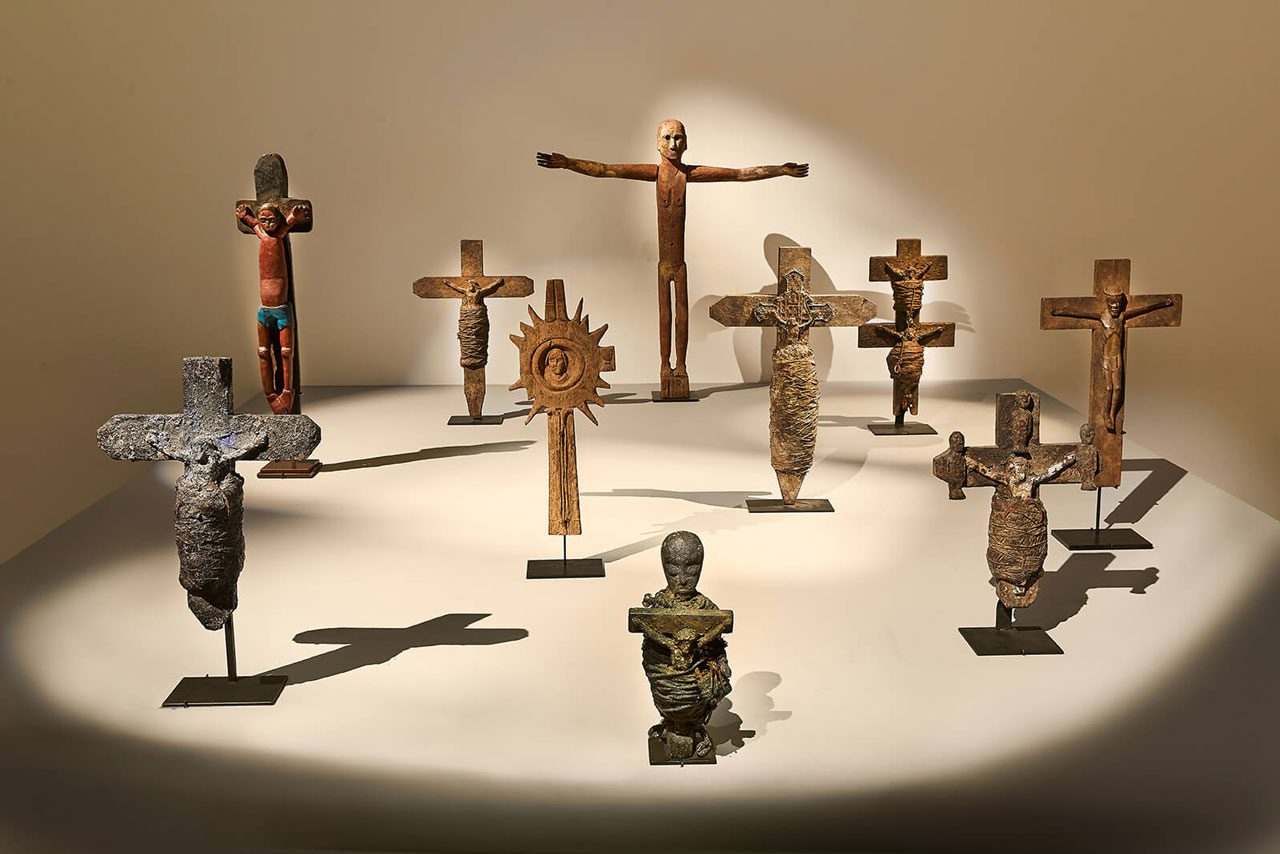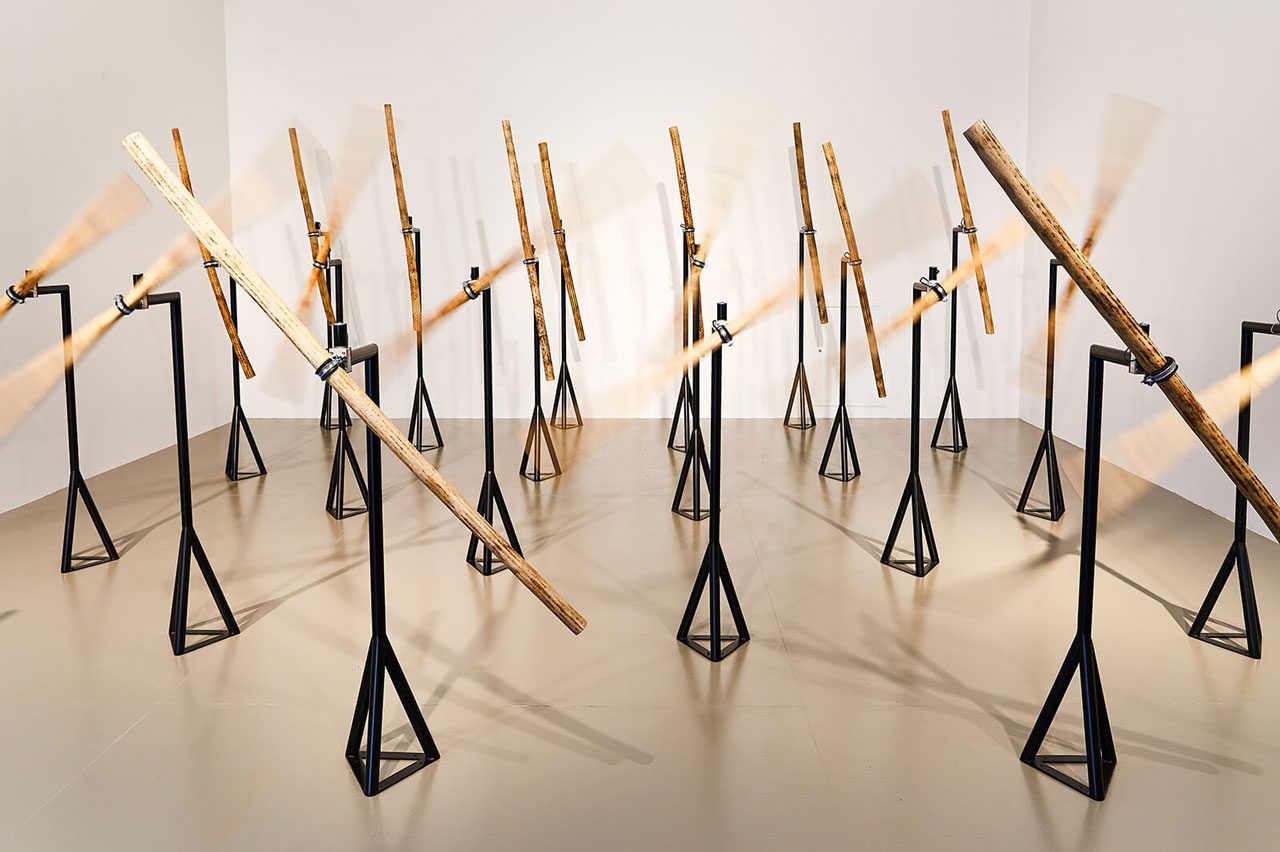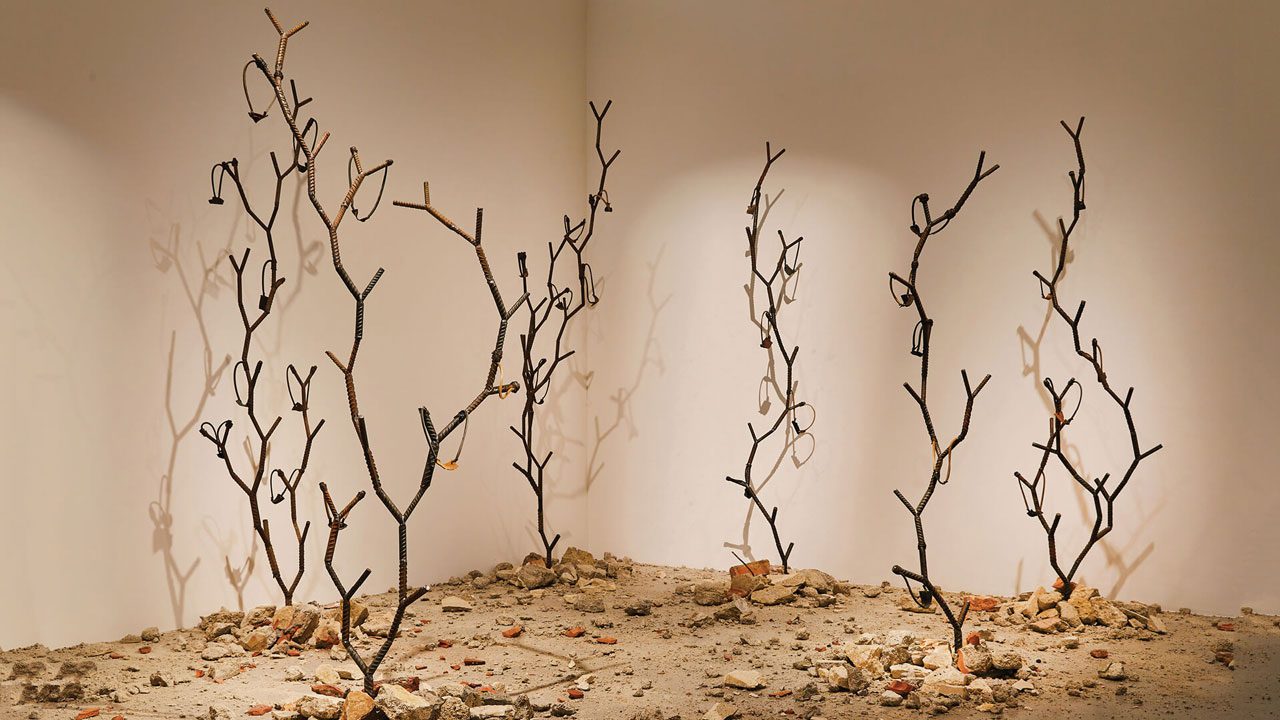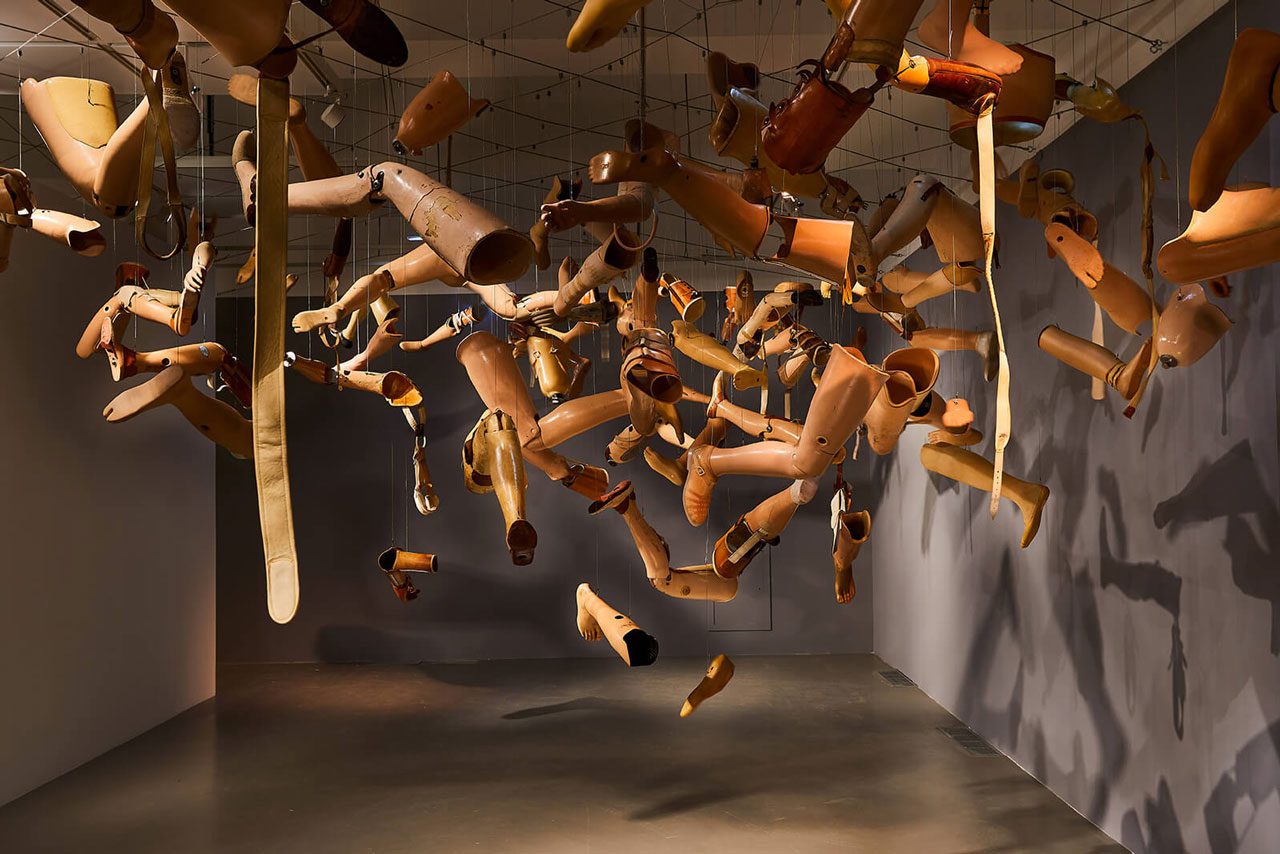PRESENTATION: Kader Attia-Descent into Paradise
Born in 1970 in Seine-Saint-Denis, Kader Attia has created a body of work that cannot be reduced to one single medium, yet it is marked by a visual language of his own. Making use of drawing, collage, photography, video, sculpture and installation to suit each of his unique projects, he raises questions about today’s society, exploring its flaws, fears, traumas, uprootings, and hopes of reparation. Travel also plays an important role in both his history and his work, invoking marginalized cultures as well as individual fates.
By Efi Michalarou
Photo: MUAC Mexico City Archive
For the exhibition “Descent into Paradise”, Kader Attia drew inspiration from the way the body wanders as a metaphor for the sky towards the earth and its depths, thus proposing a reflection on repair and transcendence that questions the notion of verticality, as a vital and spiritual movement. Like the rain that ravages and transforms natural and human creations, paradoxically an elevation can also be played out in a downward flow, allowing the unpredictable resulting form to reveal for the artist the unexpected meaning of Beauty. The exhibition begins with a succession of works that allow us to embrace the variety of media in Kader Attia’s practice, all the while evoking many of the themes developed in his work. “Oil and Sugar #2 is a video of four and a half minutes. It shows a cube made up of smaller white sugar cubes onto which black oil is poured. The more the cube drinks the liquid, the darker it becomes. As time passes, the ultra-stable shape of the cube also weakens, until it falls, and eventually disintegrates. This white cube is a metaphorical reference to the space of modern art. It is a blank space/time, which the artist will use as a basis for turning this form into a narrative for the audience. At one point, as it turns black, the big sugar cube also resembles the Kaaba, Islam’s holiest monument, with no equivalent. In both cases, the black oil destroys the white symbol associated with purity, the driving force behind the modern rational belief. This fusion of white sugar cube and black oil is also charged with a socio-political referent on the collusion between money, religion, and art. Nowadays, oil is the driving force of the global economy. It has reigned since the end of the 19th century as the raw material on which the global economy depends. It is both its strong and weak points. On the one hand, oil is totally opposed to sugar, which is sweet, white, and solid, but on the other hand, they are very similar in many ways. So, like salt and sugar in their times, oil embodies a coveted power. Before oil, sugar played an important role in the conquest of colonies, as it did in Africa, South America, Oceania, and the Caribbean. Today, as oil becomes increasingly scarce, it is all the more coveted and plays a central role in geopolitical forces on a global scale. The series of collages “Following the Modern Genealogy” (2012-2018) highlights the links between modern and traditional architecture in Africa and South America. It challenges the Western genealogy of progress- oriented architecture, while borrowing forms found in colonized territories. The work “Halam Tawaaf” (2008)” deals with both an ancestral mystical and metaphysical tradition, as with its mutation in contemporary society. Through their anthropomorphic form, the beer cans are likened to pilgrims as well as to the damned, to the infinite cyclical circle of man who forgets himself in passive and dependent behaviors, such as drug and alcohol addictions, ‘artificial paradises’ as Charles Baudelaire called them, but which make life a hell on earth. The broken faces sculpted on dead wood of “Culture, Another Nature Repaired” are also a reminder of the interplay of artistic forms between early modernity and pre-modern African art; as well as an indication of the wounds of nature; as well as a conversation between. a material that resists and the work that the sculptor brings to life. After passing under the prostheses floating in space, like an explosion suspended in time, near the trees of slingshots symbolizing the rhizomatic instinct of resistance that leads to revolution, ready to blossom each time it is stifled a little more, we can hear the sound of a trickle, then of a downpour produced by moving sculptures activating rain sticks. The sound accompanies the movement and echoes an infinite cycle in which rain falls and is tirelessly reborn. Gradually, we descend into Paradise. The place where the injury is recognized and repaired. Greeted by masks covered in mirrors with “Mirrors and Masks”, we are immediately invited to look at our fragmented reflections on the surface of an object from a pre-modern African culture, long said to be primitive. This culture was the source of inspiration for some of the greatest modern Western artists, such as Braque and Picasso, in implementing their Cubist theories, which fragmented the heritage of perspective from a single vanishing point to a multitude of perspectives, as these pre-modern non-Western cultures have always practiced. A diptych film then plunges us into “Pluviality #1”. Rain symbolizes a cyclical movement: vapor rises and falls in drops that nourish and transform. The gentle power of Nature that leaves its mark over a long period of time is reflected in the architecture filmed at several sites in northern Thailand: Chiang Mai, Chiang Rai, Chiang Saen… Statues and temple walls are invaded by the forest, the stone is marked by striations. This peaceful metamorphosis is enhanced by a story of physical and spiritual transformation told by a medium. The body of a young boy is possessed by a female spirit during a ceremony. Resisting her, he falls ill. By accepting her, they are reborn. The analogy between body and architecture is extended to the force of the blossoming that follows the metamorphosis, in another rebirth. As the artist says “The film “Pluviality #1” is an exploration of how the transition from one state to other echoes the endless transformation of the order of things by rain, the wise force of Nature, including buildings and objects that have been made to withstand the test of time. At times this transformation is so unexpected that it’s hard for us to admit it, when the simplest thing is to just accept it.”
Photo: Kader Attia, On Silence, 2021, Image: Laurent Lecat; © Kader Attia. Adagp Paris, 2024
Info: MUAC Mexico City, Insurgentes Sur 3000, Centro Cultural Universitario, Delegación Coyoacán, Ciudad de México, Mexico, Duration: 8/2-4/7/2025, Days & Hours: Wed-Sun 11:00-18:00, https://muac.unam.mx/





